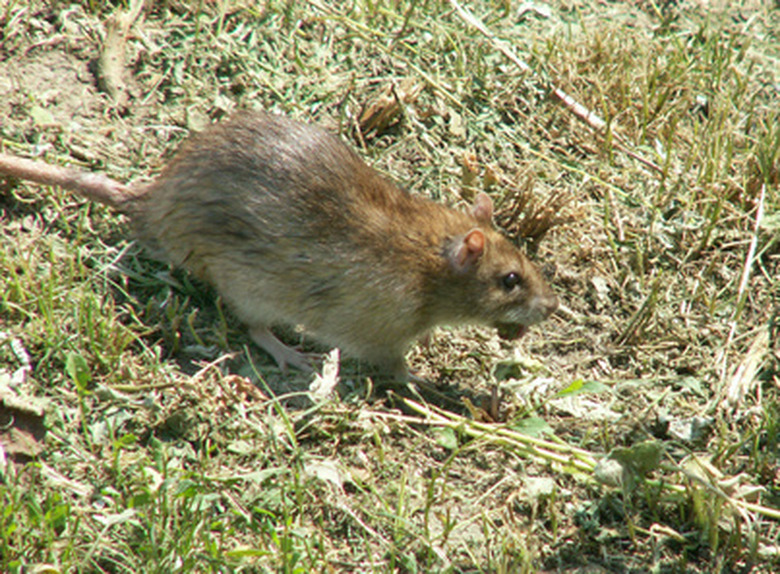Orange Trees & Rats
Rats are easy-to-identify pests of the orange tree that threaten not only the health of your citrus fruit but the sanitation of your home garden as well. Once you are certain of the type of rat visiting your landscape, choose the control method best suited to your needs to rid your orange trees of this bothersome rodent.
Rat Description
Roof rats (Rattus rattus) are the most common rat pests of orange trees. These rats, also referred to as black rats, are thin in appearance with pointed faces, black thin tails, long ears and white or gray abdomens, according to the University of California IPM Online. Roof rats weight in at approximately 5 to 10 oz.
Habits
While roof rats eat many types of food, they have a strong preference for fruits, including oranges; their two favorites are avocados and citrus fruit. Part of the challenge of ending a rat infestation is their tendency to inhabit one area and feed in another. A roof rat may live up to 300 feet away and come to your yard to feast on the fruit of your orange tree. Rats will chew through water pipes, plastic and wood to reach a water or food source, so ridding them from your orange trees may potentially keep them from infesting your home, according to the University of California IPM Online.
- Rats are easy-to-identify pests of the orange tree that threaten not only the health of your citrus fruit but the sanitation of your home garden as well.
- Rats will chew through water pipes, plastic and wood to reach a water or food source, so ridding them from your orange trees may potentially keep them from infesting your home, according to the University of California IPM Online.
Damage
When rats consume fruits from your orange tree, they pierce the skin, making a small hole. Roof rats empty and consume all of the material within the fruit, leaving a hollow rind behind, according to the University of California IPM Online. Hollowed fruit is a red flag symptom of a root rat infestation. Compared to the amount of food they consume, they contaminate much more. Fallen rinds or other food sources visited by rats become dangerous to humans, pets, wildlife and livestock because rats carry diseases like typhus and salmonellosis.
Chemical-Free Control
Always keep trash properly disposed of and pet food in tightly sealed containers to avoid attracting rats. Consider the use of traps. They are cost-effective compared to chemical methods. For roof rat control, set up traps off the ground as roof rats tend to make nests in higher locations like shelves. Traps placed on orange tree branches offer control provided that they are secured with wire or an equally sturdy material. Since traps are easily set off by other wildlife like birds, you may place the trap inside of a box before fastening it to the desired surface, according to the University of California IPM Online. Even though rats are pestering your orange trees, remember that traps are useful in nesting areas as well.
- When rats consume fruits from your orange tree, they pierce the skin, making a small hole.
- For roof rat control, set up traps off the ground as roof rats tend to make nests in higher locations like shelves.
Poison Control
Choose bait stations when poisoning roof rats. Poisons are toxic not only to rats but to humans and other animal life, so leaving poison out without protection is dangerous and, in many cases, illegal. Bait stations are enclosed boxes with poison inside that is unaffected by weather. Rats enter the station, eat the poison, and exit. Do not expect immediate results as rats are wary of new objects, according to the University of California IPM Online. Allow up to one week for rats to enter the bait station. Placement in the crotch of the orange tree is ideal for roof rat capture.
- Choose bait stations when poisoning roof rats.
- Poisons are toxic not only to rats but to humans and other animal life, so leaving poison out without protection is dangerous and, in many cases, illegal.
